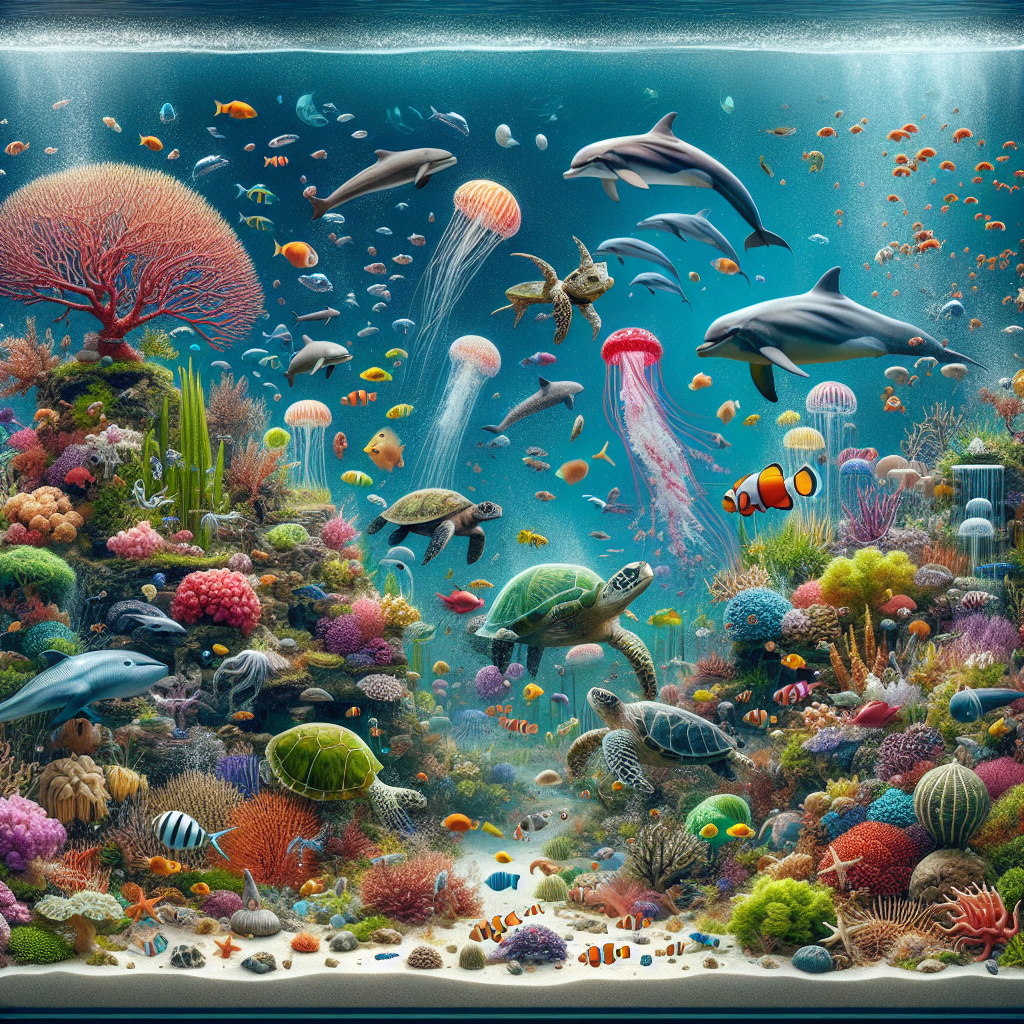Aquatic Life Overview
Embarking on the thrilling adventure of setting up an aquarium, one quickly discovers the myriad of vibrant life forms that can inhabit this underwater world. Aquariums are more than just tanks of water; they're living ecosystems that can nourish both the soul and an enthusiasm for aquatic biology. Whether you're a budding marine biologist or just fascinated by the serene aquatic tableau, understanding the common inhabitants of an aquarium is essential.
Fish: A Diverse Category
The most familiar and often central figures of the aquarium are fish. Ranging from the iridescent neon tetra to the gracefully-gliding angelfish, these gilled creatures come in an astonishing variety of shapes, sizes, and colors. Each species has its own set of requirements for water conditions, space, and diet. For example, the ever-popular betta, or Siamese fighting fish, is known for its vibrant colors and elaborate fins, but it requires a peaceful environment since males can be aggressive towards each other.
Plant Life: Oxygenating Greens
Plants are not merely decorative; they play a crucial role in maintaining the ecological balance of an aquarium by producing oxygen, absorbing carbon dioxide, and offering shelter and breeding grounds for fish. Species like the Java fern and Anubias are hardy and easy to care for, making them ideal for beginners. Aquatic plants can also be grown on driftwood or rocks to create a natural aquascape that mimics the habitats found in the wild.
Coral: Underwater Architects
For many hobbyists, the pinnacle of aquarium keeping is a reef tank featuring live corals. These living organisms are responsible for some of the most breathtaking underwater landscapes on our planet. Corals, from the sturdy staghorn varieties to the delicate fan corals, form symbiotic relationships with algae known as zooxanthellae, which need light to photosynthesize and provide the corals with nutrients.
Invertebrates: Beyond Fish
Snails, shrimp, and crabs are among the many invertebrates that can be found in aquariums. These animals often serve as clean-up crews, munching on algae and detritus, thus helping to keep the tank environment clean. The cherry shrimp is a colorful and active species that adds life to any freshwater setup, while the hermit crab is a quirky and fascinating addition to saltwater tanks.
Tank Mates: Choosing Wisely
When stocking an aquarium, one must consider the compatibility of its inhabitants. Some fish are peaceful, while others might be territorial or even predatory. Understanding the temperament and environmental needs of each species is crucial for a harmonious aquarium. Generally, a community tank will house a variety of non-aggressive species that can live together peacefully. It's always a good idea to research before purchasing a new addition to your tank.
Environmental Balance: Key to Health
Maintaining a balanced ecosystem within your aquarium is vital for the health and happiness of its dwellers. Regular water changes, proper filtration, and monitoring of water quality are all part of the routine upkeep. Remember that overfeeding can quickly lead to polluted conditions, which are harmful to fish and can cause outbreaks of algae. A variety of tools and tests are available to ensure your aquatic friends thrive.
Feeding Frenzy: Nutrition Matters
Each species has its dietary preferences, whether it's flake food, pellets, frozen or live foods such as brine shrimp or bloodworms. Herbivorous species will appreciate a diet rich in algal content or plant matter, while carnivorous species require a protein-rich diet. To witness the feeding behaviors of your aquarium inhabitants, check out these fascinating clips:
Watch Them Grow: Observation
One of the joys of aquarium keeping is observing the growth and behaviors of the inhabitants. With proper care, many fish will display breeding behaviors and may even reproduce within the tank, offering a fantastic opportunity to learn about their life cycles. Moreover, you can capture your aquarium's development and its inhabitants' antics with a time-lapse video that showcases the dynamic changes over time.

Conservation Link: Responsible Keeping
It's important to remember that the species we enjoy in our aquariums often come from sensitive ecosystems around the world. Responsible aquarium keeping starts with making ethical choices about the types of fish and corals we keep. Opt for captive-bred species whenever possible to minimize the impact on natural populations and ecosystems. Support conservation efforts and remain informed about the origins of your aquarium life forms.
Aquarium Enjoyment: Appreciate the Beauty
In creating a miniature underwater realm, one finds not only a source of endless fascination but also a profound appreciation for the complexity and beauty of aquatic life. An aquarium is a microcosm that reflects the vast diversity of life found in the world's oceans, rivers, and lakes. When you take the time to learn about the needs and characteristics of each species, you build a sustainable and enriching habitat — a small window into the marvels of the natural world. Learn more about coral reef ecosystems and their remarkable biodiversity.